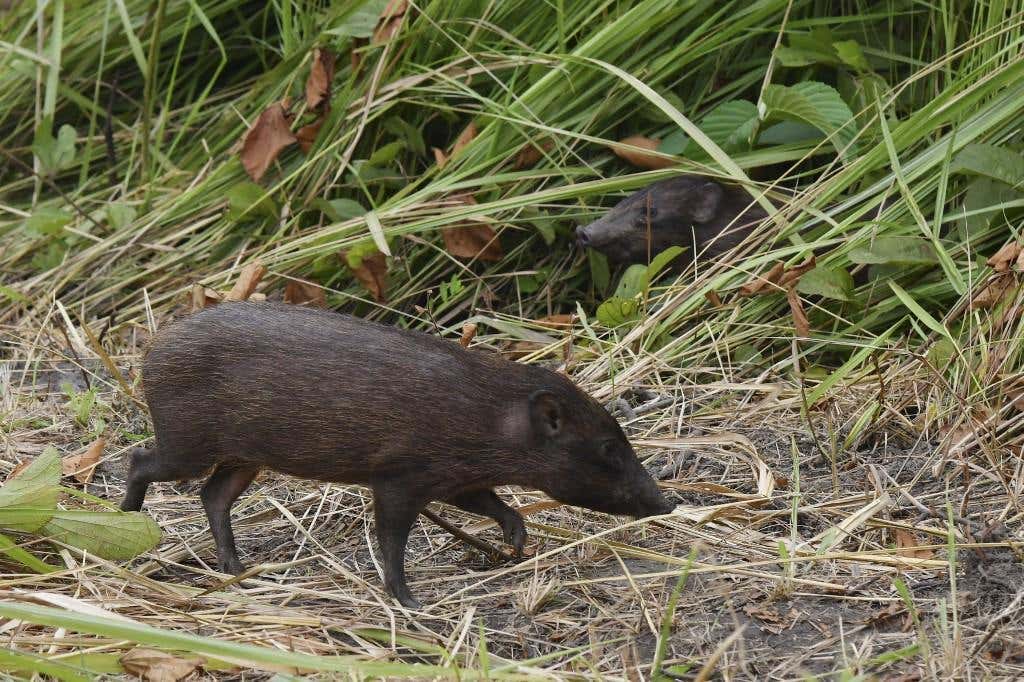Conservationists release the world’s smallest hog into the wild in India
A dozen of the world’s smallest pigs have been released into the wild in India as part of a conservation program to boost their population.

[June 28, 2021: Luke Matthews]
Captive-bred pygmy hogs, an endangered species and the world's rarest and smallest wild pigs, come out of a temporary enclosure during the release of four pygmy hogs into the wild at Manas National Park, some 146km from Guwahati, India, on June 26, 2021.
A dozen of the world's smallest pigs have been released into the wild in northeastern India as part of a conservation program to boost the population of a species once thought to have become extinct.
The pygmy hog, which has the scientific name porcula salvania, lives in tall, wet grasslands and was once found along plains on the Himalayan foothills in India, Nepal and Bhutan.
Its population declined in the 1960s, leading to fears it had become extinct until it was rediscovered in India's northeastern state of Assam in 1971, conservationists say.
By 1993, it was only found in a few pockets of Assam's Manas National Park, which borders Bhutan.
The Pygmy Hog Conservation Program, involving several organizations including from state and national governments, established a captive breeding scheme with six hogs in 1996 to try and revive their population.
"This time we are releasing 12 pygmy hogs including seven male and five female," the program's field scientist Dhritiman Das told AFP at the release site in Manas National Park.
Eight of the hogs were released in Manas on Tuesday and four more on Saturday. Some 14 were released last year.
The past week's releases take the number of pigs reintroduced into the wild by the program to 142.
The program looks after around 70 captive hogs and is breeding more to be released.
The wild population is estimated to be less than 250, conservationists say.
"In next four years, we target to release 60 hogs... so that they can build their own population in the wild," Dr. Das added.
The program has also sought to rehabilitate the grasslands home to the tiny creatures, which measure about 25cm in height and 65cm in length and weigh around 8 to 9kg.
The species' survival has been threatened by the loss and degradation of its habitats due to human activity such as settlement and agriculture, and the improper management of such areas, experts say.
Like these kind of feel good stories? Get the Brighter Side of News' newsletter.
Tags: #Global_Good_News, #Green_Good_News, #Animal_Conservation, #India #The_Brighter_Side_of_News
Joseph Shavit
Head Science News Writer | Communicating Innovation & Discovery
Based in Los Angeles, Joseph Shavit is an accomplished science journalist, head science news writer and co-founder at The Brighter Side of News, where he translates cutting-edge discoveries into compelling stories for a broad audience. With a strong background spanning science, business, product management, media leadership, and entrepreneurship, Joseph brings a unique perspective to science communication. His expertise allows him to uncover the intersection of technological advancements and market potential, shedding light on how groundbreaking research evolves into transformative products and industries.



